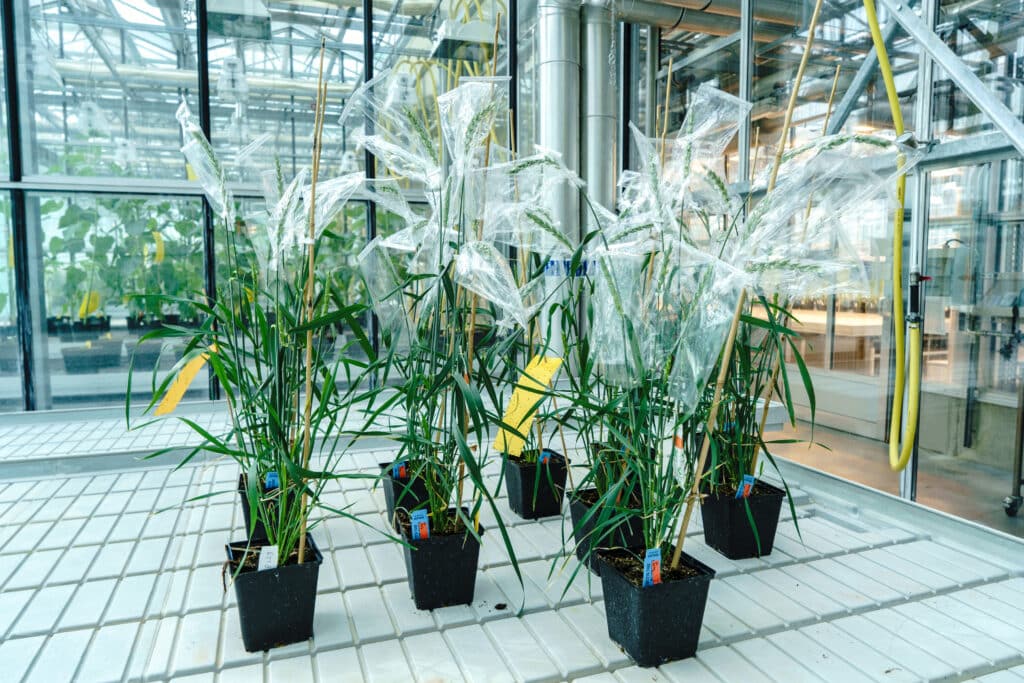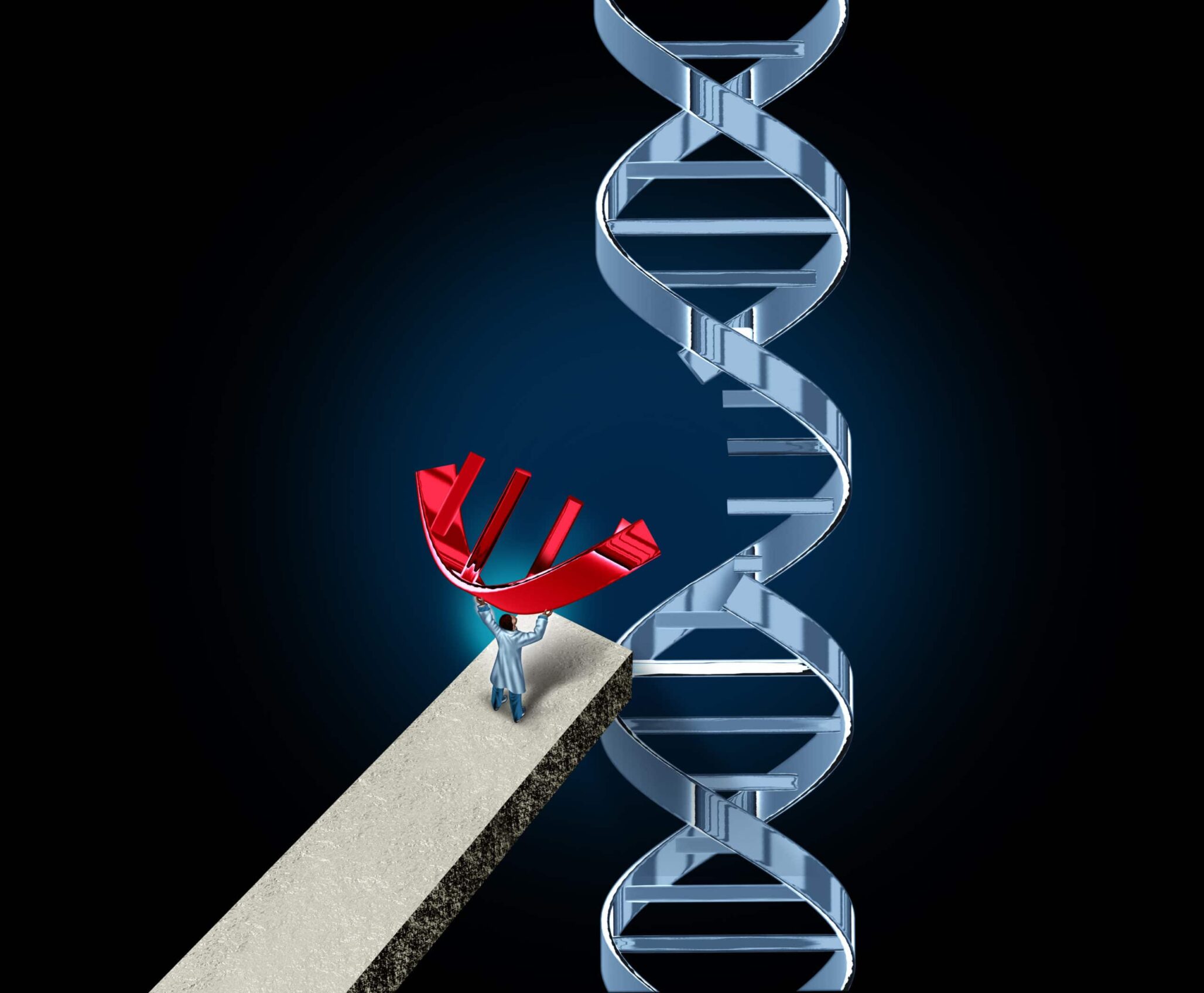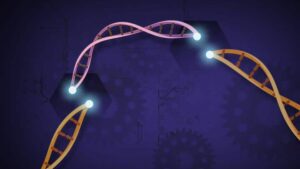In the PILTON research project, 55 mostly medium-sized plant breeding companies have joined hands to explore these techniques in a practical breeding context and to showcase the potential and analyse issues involved in the use of such methods. The method used is CRISPR/Cas and the objective is wheat enhanced with multiple and durable tolerances against fungi.
Read part one here.
Molecular Basis: Deactivate Negative Regulators in Pathogen Defence
The breeding work required for the project was carried out using targeted mutagenesis with Cas endonucleases. In the process, individual existing wheat genes have been edited in specific ways. The molecular bases of the project relate to the natural defence responses of the wheat plant that are normally induced by a pathogen. Negative regulators will usually switch off these pathogen defences sometime after its activation. As a result, this defence can only act for a very limited time in the event of a pathogen attack and would therefore not prevent that the plant exhibits symptoms. Cas endonucleases were to be used to inactivate such a specific repressor gene in wheat. Once the negative regulator is removed, the natural, induced pathogen defence was expected to be much stronger and to remain active for a much longer time. Such an enhanced defence reaction of the plant was assumed to be less targeted to individual pathogens and might lead to a broad spectrum of tolerances. The project focuses on the diseases: wheat leaf rust, stripe rust, Septoria leaf spot and Fusarium blight diseases.

New breeding methods have great potential. They are not a miracle solution, but they miraculously speed up the trial-and-error process that breeding intrinsically is. Photo: Alexander Schlichter
What Has Happened Until Now
The first step, namely the process of precisely editing the targeted genetic sequence, has been successfully completed, and the modification has proven to be stable. This was a challenge, and in the process, the project partners gained a lot of insights. The application of genome editing to the highly complex wheat genome is not a given, but so far, the project has demonstrated that it can be done, i.e., the CRISPR/Cas method in question can be successfully applied to the extremely complex plant genome of wheat.
In a second step, the filial generations have been tested for resistance against various fungal pathogens. Tests were started in 2021 and were partly repeated in 2022, but they are only possible in the greenhouse which limits their comparability. Still, from the definition of the breeding objective to trials within one year is a phenomenal pace for a breeding project.
The first genome to be edited was a spring wheat variety. Spring wheat has a shorter generation time than winter wheat, and this translated into rapid project progress since the onset of the project in 2020. During the project, all project partners were able to considerably increase their understanding of the underlying CRISPR/Cas method. This is valuable to the men and women involved in plant breeding, since they need practical experience to correctly assess the potential scope and to efficiently apply each of the available methods.
The findings have been immediately transposed also to winter wheat. Compared to spring wheat, winter wheat has a much higher relevance in German agricultural practice and, concomitantly, also for German plant breeders. The work on winter wheat has already been initiated, and as in the PILTON summer wheat project, after the editing of the plant genome has been successfully completed, the PILTON winter wheat project will proceed to test the plants in the greenhouse for their tolerance against fungal pathogens.

The first step, namely the process of precisely editing the targeted genetic sequence, has been successfully completed, and the modification has proven to be stable. Photo: Alexander Schlichter
A Steep Learning Curve
BDP has publicly communicated the project at a very early stage and in a very transparent manner. Such an endeavour always involves a certain risk. You never know the outcome of a research project. Thus, one of the things learned is that this whole process, despite all its efficiency, also takes time and money. Still, the sheer pace of the entire process, from the editing process to cultivation trial of a genetically stable variety within one year, is an advantage in comparison to the many seasons of crossing and selecting needed for a plant variety to become genetically stable under conventional breeding. If we ever want to understand the complexities of the wheat genome, this speedup is indispensable.
Access to Genome Editing Methods
Another focus of the project is the additional issue of intellectual property rights and modes of access of plant breeding companies to patented CRISPR/Cas technologies. The project has analysed in detail the intellectual property rights involved. The licensing schemes of the respective patent holders and the requirements any prospective licensors must meet have been discussed in the light of the possibilities of the plant breeding companies in Germany. This led to follow-up questions that require further scrutiny. This is still an ongoing process. It is crucial to ensure broad access of plant breeders to these methods.
As an intermediate result, we can conclude that new breeding methods do have great potential. They are not a miracle solution, but they miraculously speed up the trial-and-error process that breeding intrinsically is. It is urgent to allow plant scientists and breeders to use them, so that they can gain the insights and experience necessary for their practical application.
This requires general access of plant breeders to and a general understanding and acceptance in society for these methods. The German plant breeders will closely follow the current legislative revision process of the EU Commission.
Where on the Web: PILTON Website https://pilton.bdp-online.de/?lang=en
Editor’s Note: Ulrike Amoruso-Eickhorn is Head of Communication and Strategy at the German Plant Breeders’ Association BDP












